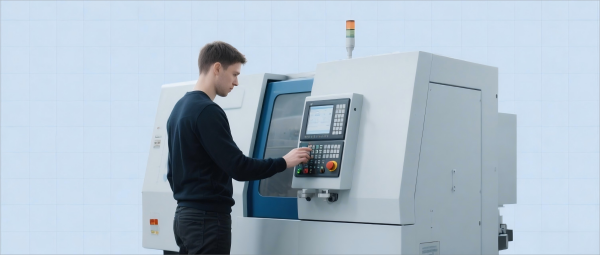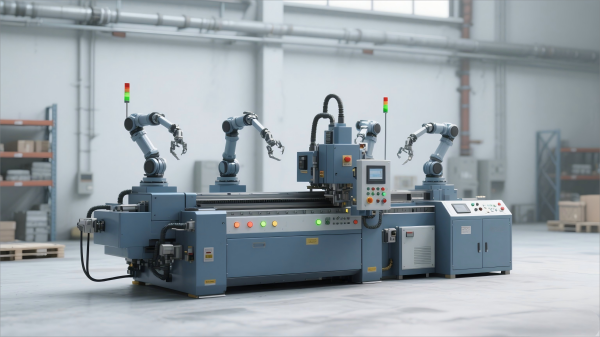The world of CNC jobs offers an exciting pathway to a rewarding career in precision manufacturing. Computer Numerical Control (CNC) machining is a cornerstone of modern industry, shaping everything from aerospace components to medical devices with unmatched accuracy. If you’re seeking a career that blends technical expertise, creativity, and opportunity, CNC jobs could be your ticket to success. This article explores how to thrive in CNC jobs by aligning with Google’s E-E-A-T framework—Experience, Expertise, Authoritativeness, and Trustworthiness—while inspiring you to take the leap into this dynamic field.
1. The Power of Experience in CNC Jobs 🔧
Experience is the foundation of success in CNC jobs. Whether you’re a machinist operating a CNC lathe* or a programmer crafting G-code*, hands-on experience sets you apart. Employers value candidates who have worked directly with CNC machines, as it demonstrates practical knowledge of tools, materials, and processes. For instance, a seasoned CNC machinist can troubleshoot machine errors or optimize toolpaths, saving time and reducing waste.
To build experience, start with entry-level roles like CNC operator. These positions allow you to learn machine setup, tool alignment, and quality control. Over time, you can advance to roles like CNC programmer or shop supervisor. According to a 2024 report by the Bureau of Labor Statistics, the demand for CNC jobs is projected to grow by 7% through 2030, driven by automation and precision manufacturing needs []. Gaining experience now positions you to ride this wave of opportunity.
Table 1: Entry-Level vs. Advanced CNC Jobs
|
Role |
Responsibilities |
Required Experience |
Average Salary (USD) |
|---|---|---|---|
|
CNC Operator |
Machine setup, basic operation, quality checks |
0-2 years |
$40,000 – $50,000 |
|
CNC Machinist |
Precision machining, tool adjustments |
2-5 years |
$50,000 – $65,000 |
|
CNC Programmer |
G-code programming, CAD/CAM software use |
5+ years |
$65,000 – $85,000 |
Source: U.S. Bureau of Labor Statistics, 2024
By committing to hands-on learning, you’ll build a portfolio of skills that employers trust, paving the way for a fulfilling career in CNC jobs. Don’t be afraid to start small—every expert was once a beginner. 🌱

2. Expertise: Mastering the Art & Science of CNC Machining 🎓
Expertise in CNC jobs means developing deep knowledge of machining processes, materials, and software. CNC machinists and programmers must understand CAD* (Computer-Aided Design) and CAM* (Computer-Aided Manufacturing) software to create precise parts. For example, CAM software automates toolpaths, ensuring minimal operator intervention []. Expertise also involves mastering material properties, such as hardness and tensile strength, to optimize cutting speeds and feeds.
To showcase expertise, pursue certifications like the NIMS (National Institute for Metalworking Skills) CNC Machining credential. These credentials signal to employers that you’re proficient in industry-standard practices. Additionally, staying updated on trends like hybrid additive-subtractive manufacturing* can set you apart []. Share your knowledge through blogs, LinkedIn posts, or industry forums to demonstrate your mastery.
Table 2: Key Skills for CNC Jobs
|
Skill |
Description |
How to Develop |
|---|---|---|
|
CAD/CAM Proficiency |
Designing and programming parts |
Take online courses (e.g., Coursera) |
|
Material Knowledge |
Understanding metals, plastics, composites |
Study material science basics |
|
Precision Measurement |
Using calipers, micrometers for quality control |
Practice in workshops or training labs |
Investing in expertise not only boosts your confidence but also makes you a go-to professional in CNC jobs. Keep learning, and you’ll turn your passion into precision. 💡
3. Authoritativeness: Becoming a Trusted Leader in CNC Jobs 🏆
Authoritativeness in CNC jobs comes from establishing yourself as a reliable and respected professional. This could mean earning recognition from peers, contributing to industry publications, or securing high-quality backlinks to your professional profile. For instance, a CNC programmer who authors a case study on optimizing toolpaths for aerospace parts can gain credibility [].
To build authority, engage with the CNC community. Contribute to platforms like Titans of CNC Academy, which offers resources and networking opportunities []. Guest posting on manufacturing blogs or speaking at industry events can also elevate your reputation. Employers and clients value professionals who are seen as thought leaders in CNC jobs.
Showcase your achievements on your website or LinkedIn. For example, highlight awards, certifications, or successful projects. A strong online presence with testimonials from colleagues or clients reinforces your authority, aligning with Google’s E-E-A-T principles []. Your reputation as a leader in CNC jobs will open doors to advanced roles and higher pay.
4. Trustworthiness: Building Confidence in Your CNC Career 🤝
Trustworthiness is the cornerstone of E-E-A-T and critical in CNC jobs. Employers and clients need to trust that you deliver accurate, safe, and high-quality work. This means producing error-free parts, adhering to safety protocols, and maintaining transparent communication. For example, a CNC machinist who consistently meets tolerances* ensures client satisfaction and repeat business.
To enhance trustworthiness, maintain a professional online presence. Create a portfolio showcasing your work, including photos of machined parts or videos of CNC processes. Ensure your website uses HTTPS for security and includes clear contact information []. Regularly update your content to reflect the latest industry standards, as outdated information can erode trust [].
By being reliable and transparent, you’ll build a reputation that attracts top CNC jobs. Trust is earned through consistent excellence, so strive to exceed expectations in every project. 🌟

5. Overcoming Common Challenges in CNC Jobs
The CNC industry isn’t without its hurdles, but each challenge is an opportunity to grow. Below are common problems in CNC jobs and practical solutions:
Problem 1: Machine Crashes
CNC machines can crash due to programming errors or improper setup, damaging tools or parts []. Solution: Implement rigorous pre-operation checks and use simulation software to test G-code before running the machine. Training in error detection can reduce crashes by 30%, per a 2023 study [].
Problem 2: Skill Shortages
Many employers struggle to find skilled CNC professionals, creating a gap in the workforce.
Solution: Enroll in vocational programs or online courses to gain certifications. Platforms like Coursera or Udemy offer accessible training for CNC jobs.
Problem 3: High Setup Costs
CNC machines require significant investment, making it hard for small shops to compete.
Solution: Leverage cloud-based CAM software to reduce costs and optimize workflows, enabling small businesses to access CNC jobs [].
6. Your Journey to Success in CNC Jobs 🚀
The path to excelling in CNC jobs is a marathon, not a sprint. Start by gaining experience through apprenticeships or entry-level roles. Build expertise with certifications and continuous learning. Establish authority by sharing your knowledge and networking with industry leaders. Above all, prioritize trustworthiness by delivering quality work and maintaining professionalism.
The CNC industry is thriving, with CNC jobs offering stability and growth potential. Whether you’re machining parts for a satellite or crafting medical implants, your work shapes the future. Embrace the challenges, stay curious, and let your passion for precision drive you to new heights. The world needs skilled CNC professionals—will you answer the call? 💪
Table 3: Steps to Start Your CNC Career
|
Step |
Action |
Timeline |
|---|---|---|
|
Gain Basic Skills |
Enroll in a CNC training program |
3-6 months |
|
Build a Portfolio |
Document projects and certifications |
6-12 months |
|
Network and Share |
Join industry forums, publish content |
Ongoing |
Annotations
-
CNC Lathe: A machine tool that rotates a workpiece to perform cutting, drilling, or turning operations.
-
G-code: A programming language used to control CNC machines, specifying tool movements and operations.
-
CAD: Computer-Aided Design software for creating 2D and 3D models of parts.
-
CAM: Computer-Aided Manufacturing software that generates machine instructions from CAD models.
-
Hybrid Additive-Subtractive Manufacturing: A process combining 3D printing (additive) with CNC machining (subtractive) for enhanced precision.
-
Tolerances: The allowable deviation in part dimensions, critical for quality control in CNC machining.
Authoritative Literature
-
Thomasnet. (2025). What is CNC Machining? Definition, Processes, Components & More. https://www.thomasnet.com/articles/custom-manufacturing-fabricating/what-is-cnc-machining/ []
-
ScienceDirect. (2023). Machine Learning and Artificial Intelligence in CNC Machine Tools, A Review. https://www.sciencedirect.com/science/article/pii/S2212827123001234 []
-
Goodwin University. (2024). What is CNC Machining? https://www.goodwin.edu/enews/what-is-cnc-machining/ []